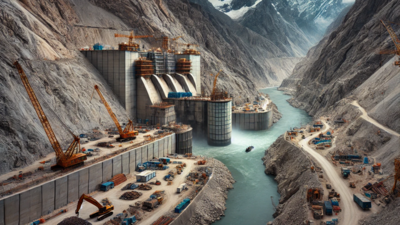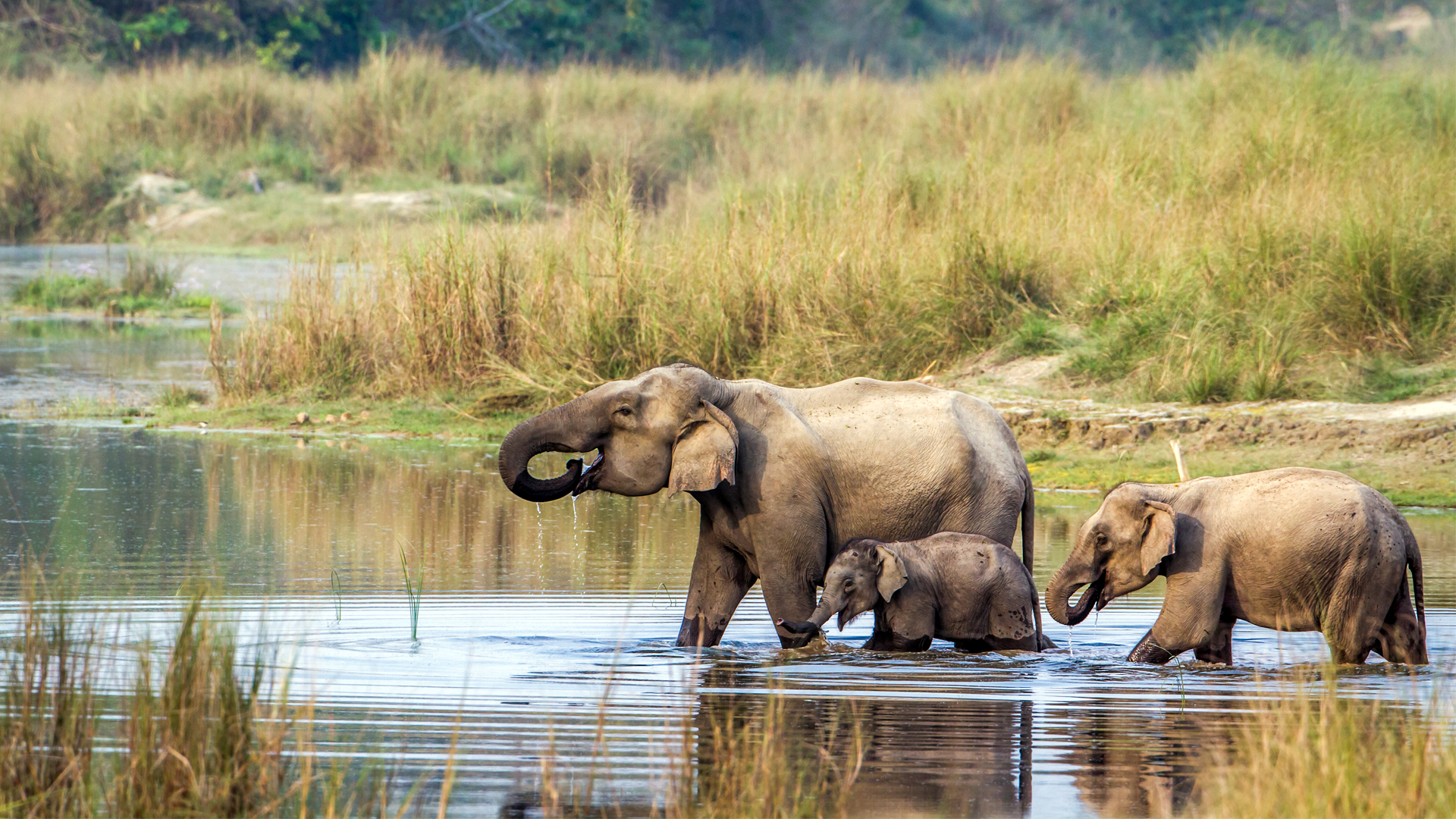Climate Journalism
The Brahmaputra’s Struggle. How China’s Dam Diplomacy Is Rewriting The Fate Of A Mighty River And India’s
Published
10 months agoon

The Brahmaputra River, once a lifeline of abundance, now stands as a shadow of its former self. Its story isn’t just one of a natural waterway succumbing to time—it’s a story of human ambition, geopolitical maneuvering, and environmental degradation.
The changes in its flow are not seasonal quirks; they instead mirror the unsettling imprint of China’s aggressive dam-building spree on transnational rivers.
The Betrayal of a River
For those who’ve lived alongside the Brahmaputra, its drying riverbed during the lean months feels like an affront. Where lush rainforests and thriving ecosystems once stood, desolation now reigns. The culprit? Suspicion lands squarely on the series of dams China has constructed upstream in Tibet, altering the river’s natural rhythms and sparking fears of a man-made drought.
Once a rarity, the sight of the exposed riverbed from November to March has become a distressingly common occurrence. Meanwhile, during the monsoon, the river transforms into a torrent of destruction, inundating Assam and wreaking havoc downstream.
China’s Hydro-Hegemony
China’s dominance over Asia’s water resources stems from its control of the Tibetan Plateau, the source of major rivers like the Brahmaputra, Mekong, and Salween. Its annexation of water-rich territories and territorial aggression in the Himalayas have made it a hydro-hegemon, unafraid to flex its power over downstream neighbors.
From Thailand to Nepal, no country in the region has been spared. Even allies like Cambodia and Laos have felt the sting of China’s dam-building strategy. But for India, the bets are higher. The proposed mega-dam on the Yarlung Zangbo (the Brahmaputra in Tibet) could become a permanent barrier to long-term water security, threatening agriculture, livelihoods, and economic growth in India’s northeast.
India’s Countermeasure
In response to China’s audacious dam-building spree, India announced its second-largest dam at Yingkiong in Arunachal Pradesh in 2022. With a staggering price tag of ₹50,000 crore, the proposed reservoir is designed to store 10 billion cubic meters of water during the monsoon and release it during the dry season. The goal – to ensure water security for India’s northeastern states.
But this ambitious project comes with its own set of challenges. A significant portion of the Brahmaputra’s non-monsoon flow comes from Tibetan snowmelt. If China, wielding its upstream advantage, decides to store or divert this critical water, the very viability of India’s dam could crumble. The potential for a sudden release of water by China only heightens the problems, leaving downstream regions vulnerable to catastrophic flooding.
China’s ‘Water Bombs’
China’s mega-dams, described as ‘water bombs,’ pose a dual threat. On one hand, they disrupt the river’s ecological balance through controlled or diverted flow. On the other, they present an apocalyptic danger if sudden, massive water releases occur. The Brahmaputra, which has long inspired awe and reverence, now finds itself precariously balanced on the knife-edge of human ambition and nature’s fury.

The World’s Largest Dam
China’s plan to build the world’s largest dam on the Brahmaputra’s lower reaches, near the point where the river dramatically turns toward India and Bangladesh is estimated at a jaw-dropping $137 billion.
This hydropower project aims to eclipse even the monumental Three Gorges Dam. For India and Bangladesh, the implications are dire. This isn’t just a dam—it’s a tool of geopolitical leverage that could redefine water security in the region.
China’s ambitious plan to construct a massive hydropower project at the Great Bend of the Brahmaputra River is as much a feat of engineering as it is a potential geopolitical game-changer.
Nestled in one of the most tectonically active zones on Earth, this project promises to harness the staggering energy of a river that plunges 3,000 meters through a gorge before crossing into India. While it is being hailed as an engineering wonder, the implications for India and its downstream neighbors are profound and deeply unsettling.
The Hydropower Goldmine
The Great Bend, located on the Tibetan Plateau, is the Brahmaputra’s most potent point for hydropower generation. With a vertical drop of 2,000 meters over just 50 kilometers, it’s no wonder China views this stretch as a goldmine for renewable energy.
The proposed dam is expected to generate a jaw-dropping 300 billion kilowatt-hours of electricity annually, enough to power over 300 million people. To put it in perspective, this project would dwarf China’s already colossal Three Gorges Dam, making it the largest hydropower plant in history.
The Tibetan Plateau. Asia’s Water Tower
Known as the “water tower of Asia,” the Tibetan Plateau feeds five major rivers that support 1.35 billion people across the Indo-Pacific region. Among these, the Brahmaputra is a lifeline for India and Bangladesh. However, China’s aggressive dam-building spree on the Mekong and Brahmaputra rivers has turned this water tower into a source of geopolitical leverage.
Four Strategic Implications of the Great Bend Dam
1) Political Consolidation: The dam would solidify Beijing’s control over its distant borderlands, including Tibet, by establishing critical infrastructure in the region.
2) Strategic Flooding Threat: By controlling water flow, China could unleash floods downstream, weaponizing water as a tool of coercion.
3) Economic and Demographic Disruption: Altered water flow could impact settlement patterns, agriculture, and livelihoods in India’s northeastern states, compounding regional vulnerabilities.
4) Bargaining Leverage: With control over the river’s flow and access to crucial hydrological data, Beijing could hold India hostage in unrelated negotiations.
Engineering Feat Or Environmental Gamble
The dam’s construction would involve tunneling through mountainous terrain to link higher-altitude sections of the river with lower-altitude stretches, creating a 50-gigawatt hydropower station. While this sounds like a technological triumph, the environmental and seismic risks are immense.
The Himalayan region is prone to earthquakes, and a project of this magnitude could have catastrophic consequences for both the environment and the millions who depend on the Brahmaputra for their livelihoods.
Geopolitics at Play
China’s announcement of the Great Bend dam in 2020, coinciding with a military standoff with India along the Line of Actual Control (LAC), underscores the geopolitical undertones of this project. Beyond energy generation, the dam symbolizes Beijing’s willingness to use its hydro-hegemony as a strategic tool.
As the largest energy consumer and hydropower producer globally, China’s climate initiatives and energy strategies wield significant influence over lower riparian nations like India and Bangladesh. While Beijing’s commitment to peaking carbon emissions before 2030 and its expansive renewable energy plans align with its eco-conscious narrative, the construction of massive hydropower projects like the Great Bend Dam casts a shadow over its intentions.

Strategic Implications for India
China’s hydropower projects, particularly the Great Bend Dam, represent more than just energy infrastructure—they are geopolitical instruments. To counter China’s hydro-hegemony, India and its partners must adopt a multi-faceted strategy.
Data Transparency: Establishing an open-source, publicly accessible data repository based on satellite sensing would provide real-time insights into the physical impacts of the Great Bend Dam. Such transparency would help India and Bangladesh monitor water flow changes and preemptively address potential crises.
Legal and Diplomatic Pressure: International law offers tools to hold Beijing accountable. Coordinated efforts by India, Bangladesh, the US, and Australia can spotlight China’s actions and demand adherence to downstream risk-mitigation measures required by global norms.
Expanding the Narrative: Bangladesh’s active involvement is crucial to building a credible counter-narrative. While India’s criticism of China may be seen as predictable, Dhaka’s participation would underscore the shared concerns of downstream nations. By collaborating with like-minded governments, India and its allies can expose the realities of Chinese dam-building and amplify the risks it poses to regional stability.
Beyond Climate Goals
China’s hydropower expansion, including the Great Bend Dam, raises critical questions about its true motivations. While it projects itself as a leader in combating climate change, its actions suggest a calculated effort to consolidate regional power through water control.
Quad’s Role in Mitigating Risks
The Quad—comprising Australia, India, Japan, and the US—integrate dam-related disaster preparedness into its Humanitarian Assistance and Disaster Relief (HADR) framework. Established in 2022, this framework emphasizes biannual meetings and tabletop exercises to improve coordination during crises.
Expanding the HADR toolkit to include water security initiatives would serve multiple purposes –
- Building capacity: Sharing information and conducting drills for dam-related contingencies, such as flooding.
- Safeguarding vulnerable populations: Enhancing regional disaster readiness aligns with the Quad’s mission of delivering public goods.
- Sending a political message: A coordinated Quad effort underscores international attention to the risks posed by China’s hydropower projects.
Is the Proposed Yingkiong Dam A Saviour?
From a geopolitical lens, the Yingkiong dam emerges as a strategic counterbalance to China’s upstream megadam projects on the Brahmaputra. By asserting India’s riparian rights, the dam could serve as a critical tool to safeguard downstream regions in India and Bangladesh from potential disruptions caused by Beijing’s aggressive hydropower ambitions.
China’s projects have sparked legitimate fears about altered water flow, sedimentation changes, and ecological instability, which could severely impact millions dependent on the river. The Yingkiong dam is designed to address these concerns by enhancing water management, creating storage solutions, and strengthening flood control mechanisms.
However, the dam’s promise as a saviour hinges on its ability to deliver measurable results amid the complex and unpredictable nature of regional geopolitics. China’s unilateral actions could worsen ecological strains and hinder cooperation, challenging India’s ability to fully mitigate risks.

Brahmaputra’s Destiny
The Brahmaputra has long shaped the lives and livelihoods of those who depend on it.
The construction of the Great Bend Dam will redefine its role—whether as a bridge for regional cooperation or a flashpoint for conflict remains to be seen. As China pushes ahead with its dam-building ambitions, the downstream nations must unite to demand transparency, advocate for equitable water-sharing agreements, and prepare for the worst-case scenarios.
